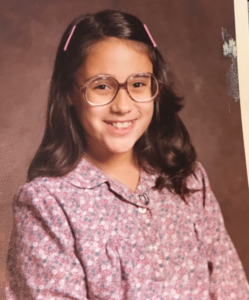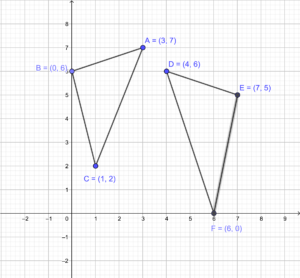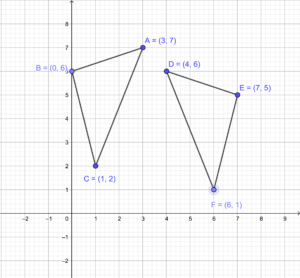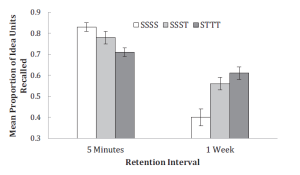This post is part of the Virtual Conference on Mathematical Flavors, and is part of a group thinking about different cultures within mathematics, and how those relate to teaching. Our group draws its initial inspiration from writing by mathematicians that describe different camps and cultures — from problem solvers and theorists, musicians and artists, explorers, alchemists and wrestlers, to “makers of patterns.” Are each of these cultures represented in the math curriculum? Do different teachers emphasize different aspects of mathematics? Are all of these ways of thinking about math useful when thinking about teaching, or are some of them harmful? These are the sorts of questions our group is asking.
One of the things that is interesting about teaching with PBL is how students often describe enjoying this type of math class more than others they have had in the past. It’s hard for students to paint a picture of what it is that produced their enjoyment. The interesting thing is that it is often not the mathematics they enjoy, but the class itself – the interactions and relationships between the people in the class, and should they be solving some interesting problems that pertain to mathematics, that’s pretty great, too.
What one girl, Isabelle, described enjoying about my class once, was the way in which she saw mathematics as no longer black and white – with only the teacher’s information as what counts. In a research interview, I asked her to describe for me what that was like:
Isabelle: Like it’s, if you have a question you can just ask it and then that can lead into, like, some conversation or [the teacher] can ask a question and then kind of leaves it out there for us, the kids, to answer it, so…
Ms. S: OK, and why do, why do you like that better?
Isabelle: Um, because it’s not so uptight and [laughs], like it’s not like focused, “memorize all of this stuff…”
Ms. S: Hmm
Isabelle: It’s more relaxed, and that helps me learn better I think.
Isabelle’s more traditional view of the mathematics classroom with its “uptight” and rigid nature reminds her of memorizing facts and formulas and she stated that she responds better to a classroom that, in her eyes, is more “relaxed” and interactive allowing her views and responses to matter. This is extremely consistent with Frances Maher and Mary Kay Thompson’s (2001) view of the feminist classroom’s responsibility to “deliberately position students as academic authorities” in order to allow them the input for the feeling that their responses matter, but so that that they do not “dismiss their own emerging sense of themselves.” Also, Isabelle’s feelings are consistent with what Fox Keller (1985) once called “dynamic objectivity” which she defined in terms of how we might be inclined to think about the idea of integrating student input with factual mathematical knowledge.
Dynamic objectivity is a form of knowledge that grants to the world around us its independent integrity but does so in a way that remains cognizant of, indeed relies on, our connectivity with that world. In this, dynamic objectivity is not unlike empathy, a form of knowledge of other persons that draws explicitly on the commonality of feelings and experience in order to enrich ones’ understanding of another in his or her own right (Fox Keller, p.117).
We can view this more flexible way of viewing knowledge as necessary for including students like Isabelle who find the more rigid mathematics classroom not conducive to learning. She would rather remain connected to the material and the persons in the classroom with her in order to facilitate learning for herself. Many students truly enjoy the fact that students are the contributors to the knowledge and part of the authority presence in the classroom. Because of the openness to the dynamic objectivity of the knowledge, the students are able to accept that their input is valuable. When I asked Isabelle why she thought the students felt so compelled to participate in a PBL classroom, she had this to say:
Ms. S: Yeah, there’s almost a guarantee that people will… I wonder why? I wonder what guarantees that everyone will have something to say.
Isabelle: Well [both laugh] it’s probably just because geometry has like twenty… like a lot of different ways to do certain problems so there’s a lot of variations in the way that people do them, so…
Ms. S: Hmm.
Isabelle: That might be it, or it might just be that people feel comfortable in the situation they’re in to participate and it’s not like, “OK nobody ask questions so we can leave now.”
Ms. S: [laughs] Yeah. Ok. So there’s a certain amount of like motivation to want to talk about it?
Isabelle: Yeah.
Ms. S: because it’s like interesting to hear what other people did? [pause] Um, yeah, I can’t figure that out.
Isabelle: I think everybody like shares the same curiosity level and like when somebody… like I know in our physics class he never tells us the answer to questions and it drives everybody crazy…
Ms. S: Huh…
Isabelle: And then we all start talking about it to try and figure out if like we can find out the answer ourselves so and the same thing happens in my math class so…
Ms. S: Yeah?
Isabelle: I think it’s just the motivation to find the right answer and like, because I know everybody in my class wants to understand.
Isabelle had described a mathematics classsroom culture with a tacit understanding of the dynamic objectivity of the part that students play in the formation of knowledge. When presented with a problem where the solution is unknown and the teacher presumes a certain lower level of authority than the students, the students take on a higher level of responsibility and curiosity in finding solutions and methods for those solutions. Being open to a view of dynamic objectivity and the empathy that it needs, allows many students to have their comfort in this type of learning environment and fosters more equity in learning for students who have previously been disenfranchised in mathematics and science classes.
Fox Keller, Evelyn, (1985). Gender and Science. New Have: Yale University Press.
Maher, F. A., & Thompson Tetreault, M. K. (2001). The Feminist Classroom. New York: Rowman & Littlefield Publishers, Inc.




